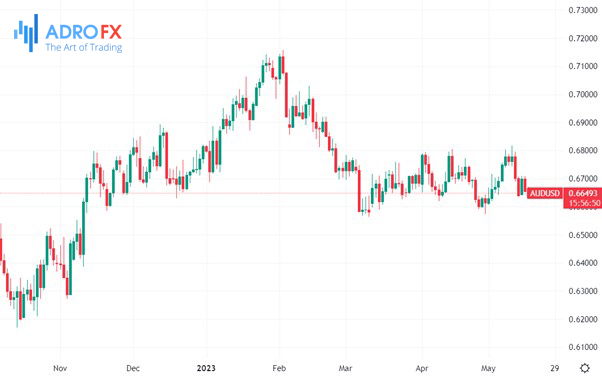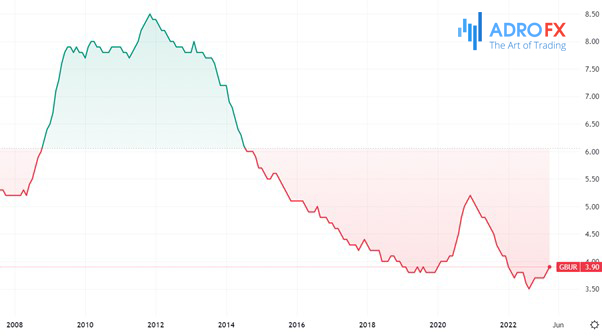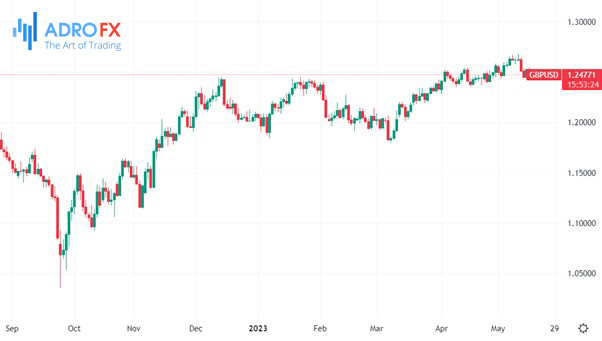US Stocks Slide on Weak Home Depot Forecast and Retail Sales; Gold Prices Dip Amid Debt Ceiling Uncertainty | Daily Market Analysis

Key events
- Eurozone - CPI (YoY) (Apr)
- UK - BoE Gov Bailey Speaks
- USA - Building Permits (Apr)
- USA - Crude Oil Inventories
On Tuesday, the US stock indices ended the day in negative territory due to unfavorable predictions made by Home Depot (NYSE: HD) and the release of April's US retail sales data, which indicated a decrease in consumer spending. Additionally, concerns surrounding interest rates and ongoing negotiations regarding the debt limit had a dampening effect on market sentiment.

Home Depot's disappointing performance had a significant impact on both the Dow Industrials and the S&P 500, with the company's stock declining by 2.15%. This decline was primarily attributed to the home improvement retailer revising its annual sales forecast downward and anticipating a more substantial decline in profit than initially expected.
The Dow Jones Industrial Average experienced a decline of 336.46 points, equivalent to a 1.01% decrease, closing at 33,012.14. Similarly, the S&P 500 saw a loss of 26.38 points, or 0.64%, settling at 4,109.9. The Nasdaq Composite also dipped by 22.16 points, indicating a 0.18% decrease, and closed at 12,343.05.

Recent data has revealed a slowdown in the US economy, which can be attributed to the series of interest rate hikes implemented by the Federal Reserve to combat high inflation. The deceleration, combined with ongoing negotiations concerning the US debt ceiling, has shifted attention towards when the central bank will pause the rate hikes or potentially lower interest rates.
Although the market currently reflects expectations of a rate cut by the end of the year, recent statements from Federal Reserve officials suggest that they are not yet prepared to implement rate cuts in the near future.

The Australian Dollar (AUD/USD), which serves as a forex risk barometer, experienced a significant decline of 0.7%, falling from 0.6700 to 0.6655 compared to the previous day. The release of the meeting minutes indicated that the Reserve Bank of Australia (RBA) has kept the possibility of future rate hikes open; however, the decision would be contingent upon the development of the economy and inflation.
At the same time, the deteriorating state of the UK labor market is becoming more pronounced. Today's data release revealed that jobless claims surged by 46.7k in April, following a 26.5k increase in March. This figure surpassed analysts' average expectation of a 31.2k rise.

Consequently, the unemployment rate climbed to 3.9%, marking the highest level since January 2022, after reaching a low of 3.5% in August. Despite this shift in employment trends, there has yet to be a significant impact on wage pressures. Average weekly earnings for the three months ending in March showed a year-on-year increase of 5.8% for total pay and 6.7% when excluding bonuses. Although slightly below expectations, it remains challenging to envision a reversal of this weakening trend.
The simultaneous occurrence of declining employment and rising wages presents a challenging situation for the Bank of England. On one hand, increasing wages while inflation is already decreasing raises concerns and necessitates further policy tightening. On the other hand, rising wages create conditions conducive to the development of an inflationary spiral, despite the decline in employment.
In response to the weak employment figures, GBP/USD initially dropped by 0.4% to 1.2465. However, the currency pair quickly absorbed the negative sentiment and recovered over the next few hours, reaching 1.2545.

Interestingly, GBP/USD has demonstrated a tendency to rally in the face of relatively negative economic news this week. Despite the IMF's announcement on Monday that the UK is the only G7 country facing a recession this year, GBP/USD still gained 0.7%. It appears that a considerable amount of pessimism may already be factored into current prices.
Meanwhile, gold prices dipped below significant levels due to the uncertainty surrounding the US debt ceiling, leading to a resurgence in the dollar and Treasury yields. Additionally, gold experienced some profit-taking in recent sessions following its earlier surge to record highs this month. The decline in value caused bullion to break through the important support level of $2,000 per ounce.

The rebound in the dollar and US Treasury yields exerted pressure on the price of gold, as negotiations persisted regarding the potential increase of the US debt ceiling before the June 1 deadline. Policymakers are expected to continue discussions on the matter throughout the week, with both Democrat and Republican lawmakers expressing optimism about avoiding a first-ever US default.









